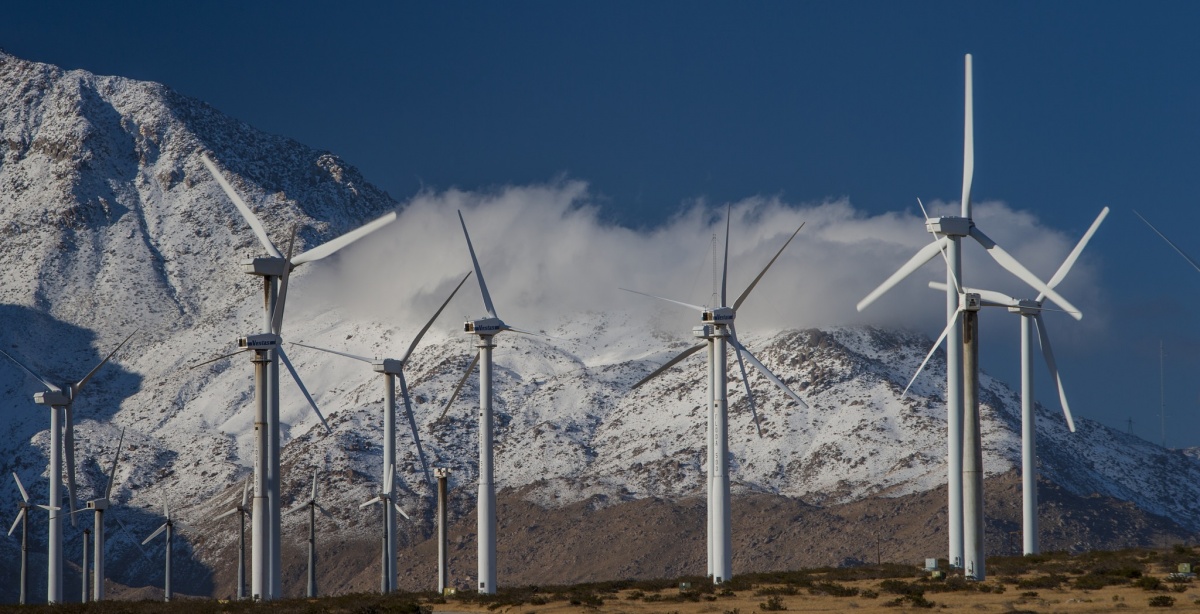Secretary of the Interior Ryan Zinke and I don’t agree on most public lands issues, including greater sage-grouse, national monuments, fossil fuel energy exploitation, and endangered species to name a few. But we do agree on at least one matter: Solar panels don’t belong on public lands.
“If I see solar cells out on land, that land is no longer useful for anything else but energy, but there’s a lot of roofs when you fly over,” Zinke said last September. “And I think the greatest opportunity, quite frankly, for the solar industry is [to] look at all the roofs in America.”
The footprint of a solar farm is massive and stark, leaving no room even for domestic livestock, let alone native wildlife. Source: Bureau of Land Management.
I agree. Public lands should provide goods and services that private lands cannot.
The Obama administration made it somewhat harder to develop nonrenewable oil, gas, and uranium energy on federal public lands, mainly by placing certain lands and waters off-limits. Unfortunately, that same administration made it a lot easier to develop renewable wind and solar energy on federal public lands. Any kind of energy development has a huge footprint on public lands.
In 2012, the Obama administration offered up 285,000 acres of federal public lands in Arizona, California, Colorado, Nevada, New Mexico, and Utah to solar energy exploitation. In 2016, the Obama administration said its Western Solar Plan “keeps the door open, on a case-by-case basis, for the possibility of carefully sited solar projects outside solar energy zones on about 19 million acres in ‘variance’ areas.” Almost nine Yellowstone National Parks could fit into 19 million acres.
While domestic livestock may graze among the wind towers, such areas either repel native wildlife or attract them to their deaths. Source: Bureau of Land Management.
While climate change is an existential threat and the world must move rapidly from nonrenewable carbon fuels to carbon-free renewable energy sources, the public lands need not be industrialized to save Earth as we know it.
The Trump administration, while preparing to open up vast public lands acreage to fossil fuel exploitation, isn’t particularly keen on facilitating renewable energy since, well, it’s renewable. Thank the flying spaghetti monster for small favors.
On private or public lands, wind towers and their spinning blades and noise kill birds, bats, and other wildlife. To the degree that we must have them, wind towers should be on private rather than public lands. Wind farms overlapping monoculture farms of wheat, corn, and soybeans do less environmental damage because there is little useful habitat for wildlife in such agricultural monocultures. In contrast, wind farms in biologically diverse habitats on public lands mean death to bighorn sheep, sage-grouse, bats, golden eagles, and many other species.
The National Renewable Energy Laboratory estimates that 39 percent of the nation’s electricity can be produced on existing roofs using today’s solar technology. Better and less-expensive photovoltaic panels and batteries are here now and are still coming. In addition, off-the-shelf technologies to reduce demand for electricity mean we won’t need to replace every nonrenewable kilowatt-hour with a renewable kilowatt-hour.
Besides terrorizing native wildlife, disturbing vegetation and marring the view, utility-scale (very large centralized generation) facilities—be they producing “green” electrons from renewable or “brown” electrons from nonrenewable energy—and their large power lines are vulnerable to terrorists. No self-respecting terrorist is going to bother to take out the 7 kilowatts of photovoltaic panels on my roof.
Agricultural monocultures don’t attract much wildlife, so fewer animals are killed by wind turbines in such biological deserts. Source: Gary Halvorson, Oregon State Archives.
Another advantage of lots of small-scale distributed energy production is that when homeowners and businesses both small and large invest in photovoltaic panels, they reduce their energy costs, if not also make money. Wouldn’t you rather not pay your electric utility as much money—or better yet, have it pay you?
If very-large-scale photovoltaic arrays are needed, plenty of sites are available on nonfederal lands, including farmland ruined by saline irrigation water and chemically toxic brownfields unsuitable for other uses. Any large parcel of federal public land that has little or no public value but is valuable for solar energy production because it’s both sunny and near existing power lines should be auctioned off to the highest bidder, and the proceeds should be used to acquire other higher-conservation-value land in the area.
As Keep It in the Ground is the right mantra for fossil fuels, Keep It in the Town is the correct refrain for renewable energy.
While photovoltaic panels can happily and profitably live on roofs in town, bighorn sheep, desert tortoises, and sage-grouse cannot.


